
GUEST BLOGGER: CAROLINE ARNOLD
Whether you are five or seventy-five, the joy of seeing a tiny caterpillar transform into a beautiful butterfly never grows old. My book BUTTERFLIES IN ROOM 6: See How They Grow follows a classroom of kindergartners as they raise painted lady butterflies. In this photo essay we see the process of metamorphosis from tiny egg, to caterpillar, to chrysalis, and finally to the emergence of the adult butterfly. Children observe each stage up-close as they learn firsthand about a butterfly’s life cycle. Then, when the butterflies are a few days old, the children release them in the school garden.
Butterfly reading strategies
Main text: The text of BUTTERFLIES IN ROOM 6 is written on two levels—the main narrative, printed in larger type, and sidebars, printed in smaller type. Headings are red and in capital letters for emphasis. What is the effect of telling the story in the present tense? Does it make you feel as if you are participating in the process?
Sidebars and captions: The sidebars and captions add information, provide the opportunity to introduce more difficult vocabulary, and expand material in the main text. Note that the sidebars are printed over a photo of a hollyhock leaf—one of the plants that painted lady butterflies use for laying eggs.
Photos: “Reading” the photos is an important part of understanding the book. Photos add information to the story (such as showing what the flight cage looks like), show the children in their environment (in the classroom and the school garden), provide a sense of scale (we see the size of a painted lady butterfly as it rests on a child’s finger), and enlarge details for a closer look ( the parts of a butterfly’s body.). The photos also reveal the children’s emotional response to the butterflies. We see and share their sense of wonder as they participate in each step of the process.
Back matter: Back matter includes answers to questions about butterflies, vocabulary, links to information about butterflies online, and further reading in books about butterflies.
Hands-on butterfly activities promote reading skills
Time line: The events of the story in BUTTERFLIES IN ROOM 6 occur in chronological order. You can use these events to create a time line, beginning with the eggs (Day 1) and ending with the release of the butterflies in the school garden. Alternatively, if you raise your own butterflies, you can document the day by day development of the caterpillars and butterflies in the squares of a calendar.
Pasta and Paper Plate Butterfly Life Cycle: This project helps students visualize the different stages of butterfly development. The circular design reinforces the repetitive nature of the cycle.
You will need: A paper plate; 4 types of pasta: bulgar for eggs; ziti for the caterpillar; shells for the chrysalis; and bowties for the butterfly; glue; markers, paint or crayons
Directions: Make an X across the paper plate to divide it into four sections. Label each section with a butterfly stage in this order: egg, caterpillar, chrysalis, butterfly. Glue the appropriate pasta in each section. Draw or paint leaves. Color the pasta if desired.
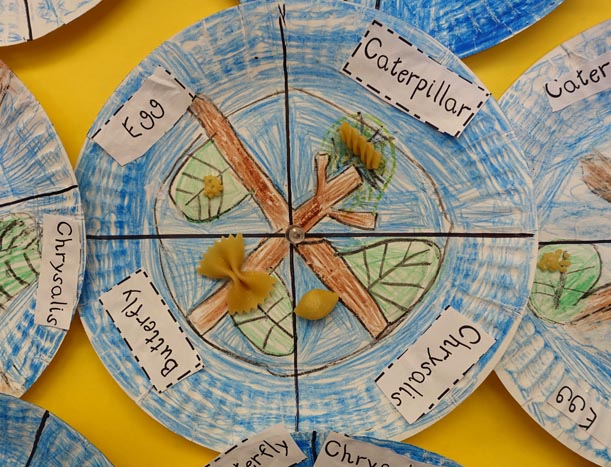
What do You See in Your Magnifying Glass?
Butterfly eggs are tiny—not much bigger than a grain of salt! Caterpillars are tiny too. A magnifying glass helps students get a close-look. The students can document their observations by drawing a diagram and writing a short description.
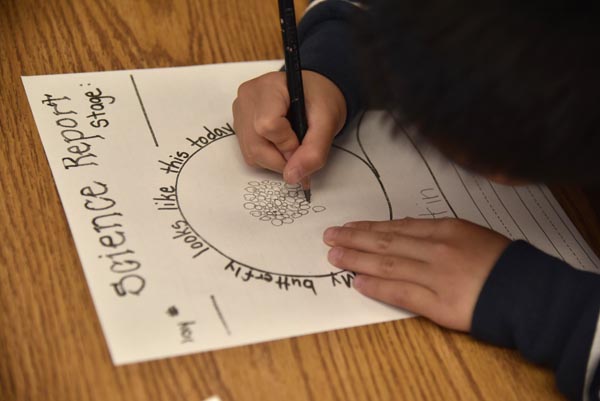
Raising Butterflies from Caterpillars
It is not hard to raise painted lady butterflies at home or in the classroom. Most people begin with caterpillars. There are a number of sources on the internet where you can order painted lady caterpillars. The tiny caterpillars come in a plastic cup with a supply of food and directions for care. It usually takes about three weeks for the caterpillars to grow, form chrysalises, and transform into butterflies. If you find a painted lady caterpillar on a plant outdoors, you may be able to watch it grow and transform into a butterfly if you put it in a container and feed it fresh leaves every day. (Painted lady caterpillars prefer thistle or hollyhock leaves.) The butterfly will emerge about 8-10 days after it forms a chrysalis.
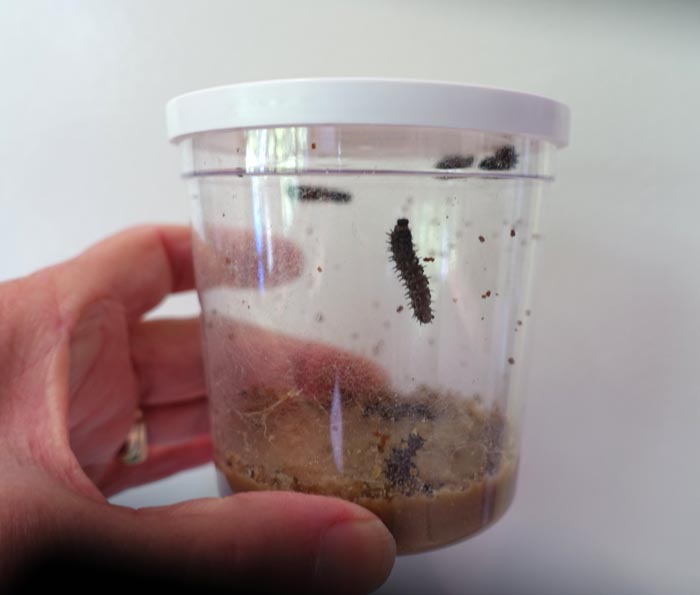
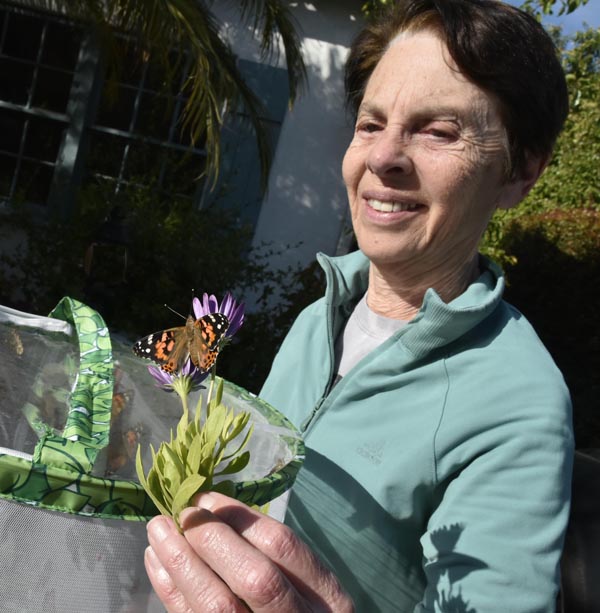
Caroline Arnold has been writing since 1980 and is the author of 170 books for children, including Butterflies in Room 6 and companion book Hatching Chicks in Room 6 (2017), a JLG Premier Selection and CRA Eureka Award winner. Both books are illustrated with her own color photos. Other recent titles include A Day and Night in the Rain Forest in her Habitats series , illustrated with her own cut paper art, and A Polar Bear’s World, winner of the CRA Eureka Award for Nonfiction. A noted science writer, Caroline Arnold has had thirty-three books on the NSTA Outstanding Science Trade Books list including Too Hot? Too Cold? and A Warmer World. Her books are inspired by her travels, her love of animals, fossils, and the out-of-doors. She lives in Los Angeles, California. www.carolinearnold.com


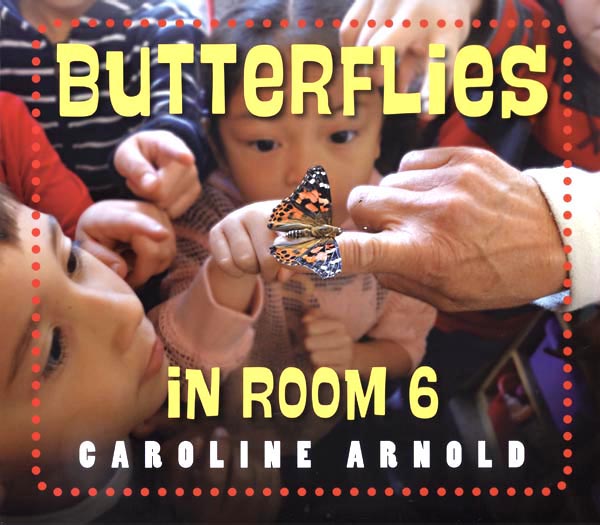





Leave a Reply
Your email is safe with me.